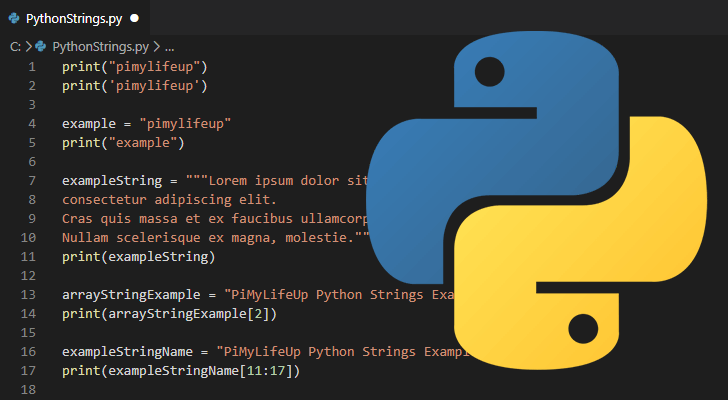Python offers many features to work with numbers and strings. Sometimes you may need a string to be of specific length for processing it further. If your string is smaller than required length, you may need to pad the string with zeroes to increase its length. In this article, we will learn how to pad string in Python.
How to Pad String in Python
Let us say you have the following string in python.
n = '4'
If you want to pad the above string to say 4 characters, then you can use zfill() function as shown below.
>>> print(n.zfill(4)) 0004
How to Pad Number in Python
On the other hand, if you have a number, not a string, then you can use any of the following print() commands with format() command to pad the number with zeroes to its left. It is just general string formatting.
>>> n = 4
>>> print(f'{n:04}') # Preferred method, python >= 3.6
0004
>>> print('%04d' % n)
0004
>>> print(format(n, '04')) # python >= 2.6
0004
>>> print('{0:04d}'.format(n)) # python >= 2.6 + python 3
0004
>>> print('{foo:04d}'.format(foo=n)) # python >= 2.6 + python 3
0004
>>> print('{:04d}'.format(n)) # python >= 2.7 + python3
0004
How to Pad to Right in Python
The above methods pad strings & numbers to the left by prepending then with zeroes. If you want to pad the zeroes to right, you can use the following command.
'{:<04d}'.format(n)
4000
On the other hand, you can get left padding by slightly changing the format specifier in above command.
'{:>04d}'.format(n)
0004
In this article, we have learnt how to pad string and numbers with zeroes in Python. You can use any of these commands as per your requirement.
Also read:
How to Get Size of Object in Python
How to Import from Parent Folder in Python
How to Attach Event to Dynamic Elements in JavaScript
How to Get Subset of JS Object Properties
How to Close Current Browser Tab
Related posts:
What Is __name__ In Python
How to Merge PDF Files Using Python
How to Export Pandas Dataframe to PDF
How to Convert DocX to Pdf in Python
How to Iterate over Multiple Lists in Parallel in Python
How to Read Inputs as Numbers in Python
How to Check Python Package Dependencies
How to Run Python Script in Apache Web Server

Sreeram has more than 10 years of experience in web development, Python, Linux, SQL and database programming.
